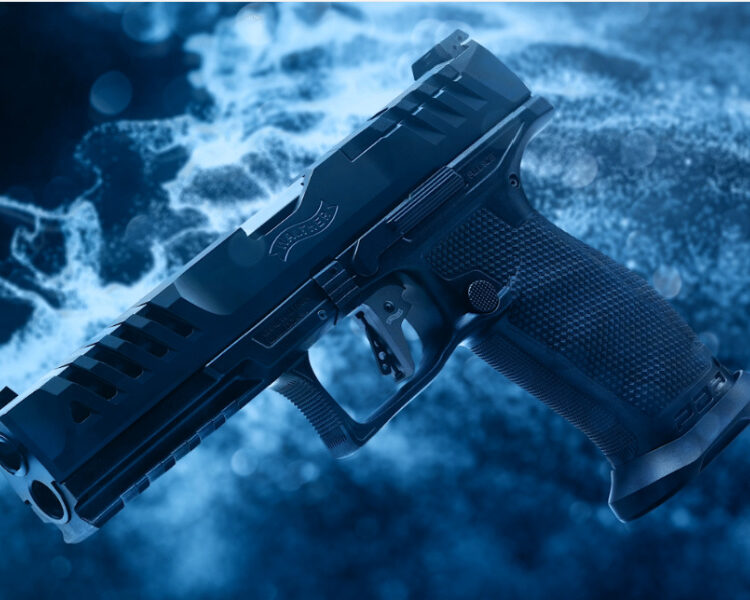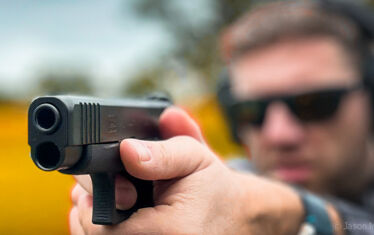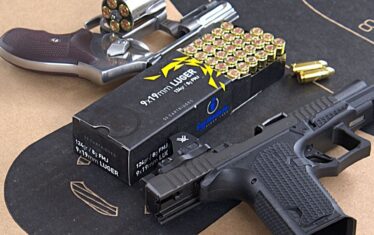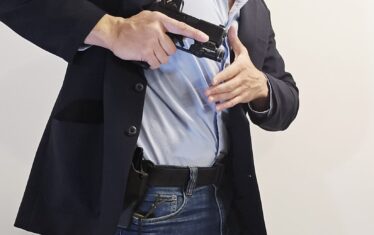Walther Arms is one of the world’s premier firearms manufacturers. Founded in 1886 in Zella-Mehlis, Germany, Walther has been a leading manufacturer of military, law enforcement, and concealed carry handguns, as well as competition pistols and rifles.
The road hasn’t always been smooth. Walther was twice reduced to almost nothing. But the Walther family reestablished the business each time, paving the road to the classic and cutting-edge products the company produces today.
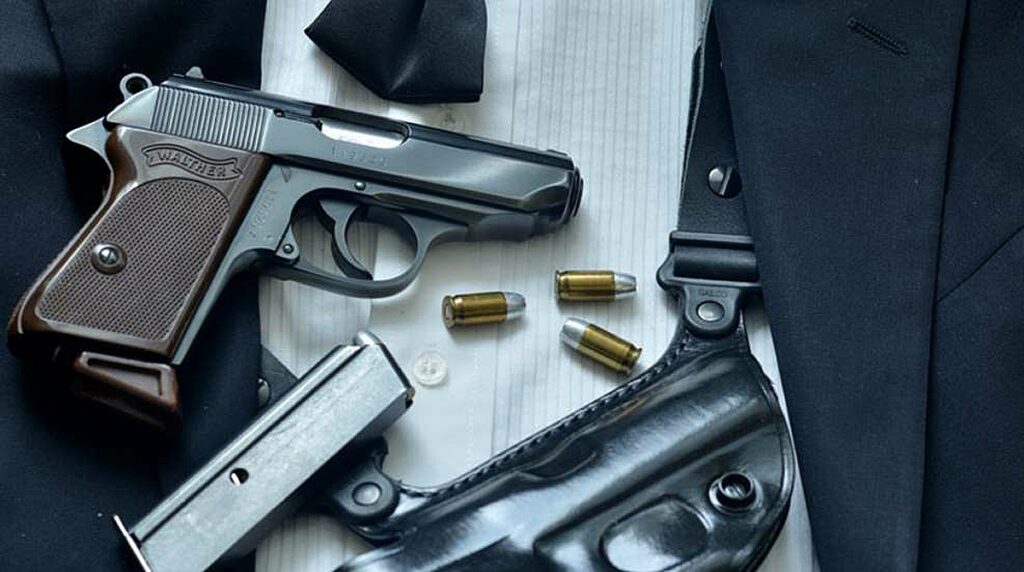
A Strong Foundation
Carl Walther (pronounced VALT-hehr) founded his namesake company in 1886, but he came from two lines of respected rifle makers, like his father August Theodor Walther and his great-grandfather Gustav Wilhelm Pistor.
Carl began by making hunting and target rifles in his parents’ house. He and his apprentice used hand tools, a vise, a small forge, and a foot-pedal lathe. The 28-year-old Walther built his rifles on British Martini falling block receivers.
Walther expanded operations to a small factory facility in Zella-Mehlis in 1903. By this time, Walther’s five sons, Fritz, Georg, Wilhelm, Erich, and Lothar all worked for the firm. Fritz, Georg, and Wilhelm became gunmakers, while Erich learned the business side and Lothar focused on tools and dies.
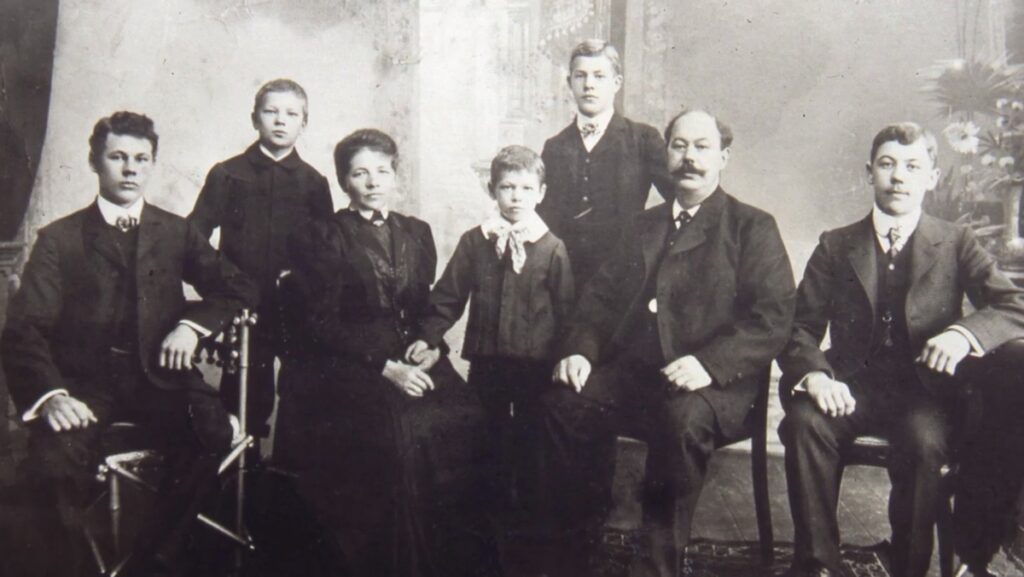
Fritz Walther trained as a journeyman in Berlin, where he was exposed to the emerging semi-automatic pistol technology, including the work of Georg Luger. He was convinced that semi-auto handguns had a bright future, and his father agreed.
Walther unveiled the prototype Model 1 in 1908. The Model 1 was a fixed-barrel, straight blowback pocket pistol, which began production in 1911. Interestingly, it wasn’t called the Model 1 until Walther later introduced the updated Model 2. The evolution culminated with the Model 9, which was discontinued in 1920.
Walther also began producing the somewhat larger Model 4, chambered in 7.65mm Browning (.32 ACP), in 1911. The Model 4 was geared toward police and military applications, while the Model 1 line was a pocket pistol for self-defense. The Model 4 was marketed to police agencies until 1927.
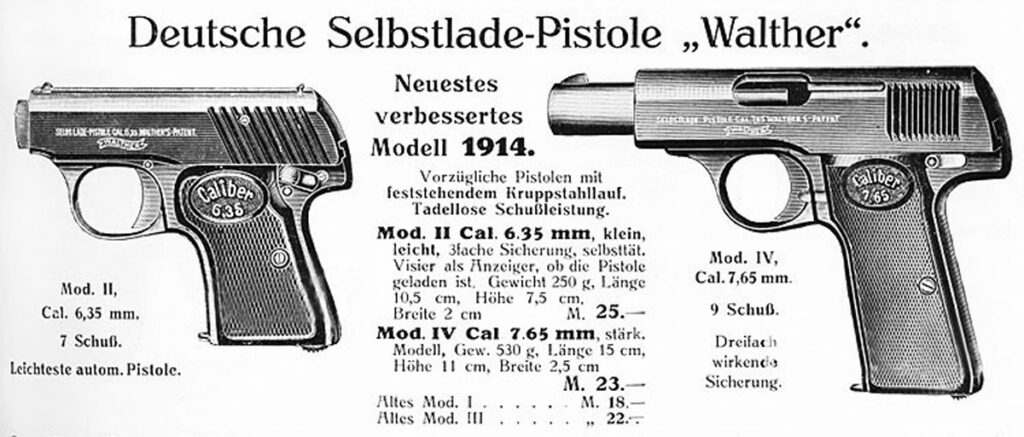
A Classic Transition
World War I saw Georg and Wilhelm Walther conscripted into the Kaiser’s army. Wilhelm was mortally wounded and died on Christmas Eve, 1914. The news drove Carl Walther into despair, exacerbating his already failing health. He died on July 9, 1915, and the company’s reins passed to the eldest brother, Fritz.
Germany’s defeat in 1918 brought hard times. The Versailles Treaty prohibited military firearms production and the German economy was so bad that no one could afford guns made for civilians. The Model 4 was sold as a police sidearm, but firearms sales were otherwise slow or nonexistent.
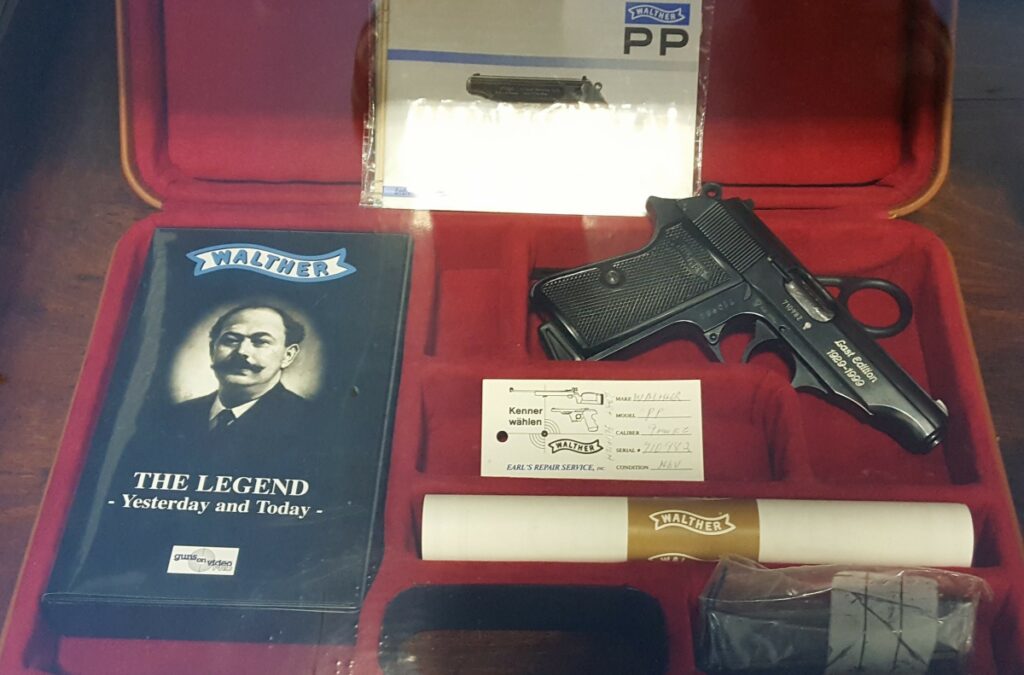
Many German gunmakers went under, but Walther began making adding machines, which kept the company afloat for most of the turbulent Weimar Republic years. But Fritz Walther didn’t give up on firearms. Realizing that the Model 4 had gone about as far as it could, Fritz revitalized his company’s fortunes in 1929 with a new design, the Polizeipistole, or PP.
The Walther PP & PPK
Fritz Walther’s Polizeipistole was revolutionary. The PP was the first working double/single action semi-automatic handgun. It was also the first to incorporate a hammer-drop safety, which is standard on most double/single action semi-autos to this day. The PP was instantly safer than the single action-only pistols of the day.
Another novel feature was the push button magazine release, as opposed to the more common heel release. In fact, the “American” style button magazine release was initially inspired by the PP. The new pistol was also chambered for 7.65mm Browning, which was the most common police caliber at the time.

Superb craftsmanship and sturdy reliability rounded out this excellent pistol, which saw continuous law enforcement service until 1992. The PP’s popularity led to expanded caliber options, including .22 Long Rifle, .380 ACP, .25 ACP, and 9×18 Ultra, also known as PP-Super. The PP was finally phased out of police service in favor of modern 9mm sidearms and finally discontinued in 1999.
But that wasn’t all. Walther built on the PP’s success by introducing the Polizeipistole Kriminalmodell, or PPK, in 1931. The name doesn’t imply that it was intended for criminals. Just the opposite. The smaller PPK was intended for plainclothes detectives, and “kriminalmodell” translates as “detective model.”
The PPK’s quality was every bit as good as its larger brother and both models became law enforcement and military mainstays, where they served into the 1990s. That proven quality served Walther well when the German Army started looking to replace its expensive P08 Lugers just a few years later.

The Walther P38
Germany began rearming in 1933, and it was soon apparent that the Luger was too expensive to mass produce, especially when modern tanks, artillery, and aircraft had priority. Fritz Walther got wind of the coming change and determined to take advantage. The result was the outstanding and forward-thinking Walther P38, which won the trials going away.
The P38 took certain design cues from the Luger because Fritz understood that drastic changes would create more resistance from the Army. The P38 kept the Luger’s 9×19 chambering, open slide, and takedown lever, which is in the exact same spot.
Walther upgraded the P38 with the falling block locking system and double/single action capability brought forward from the PP and PPK. Tolerances were loosened to create a more reliable sidearm than the superbly engineered, but easily fouled Luger. The P38 handled dirt and mud from the field that usually jammed the Luger.
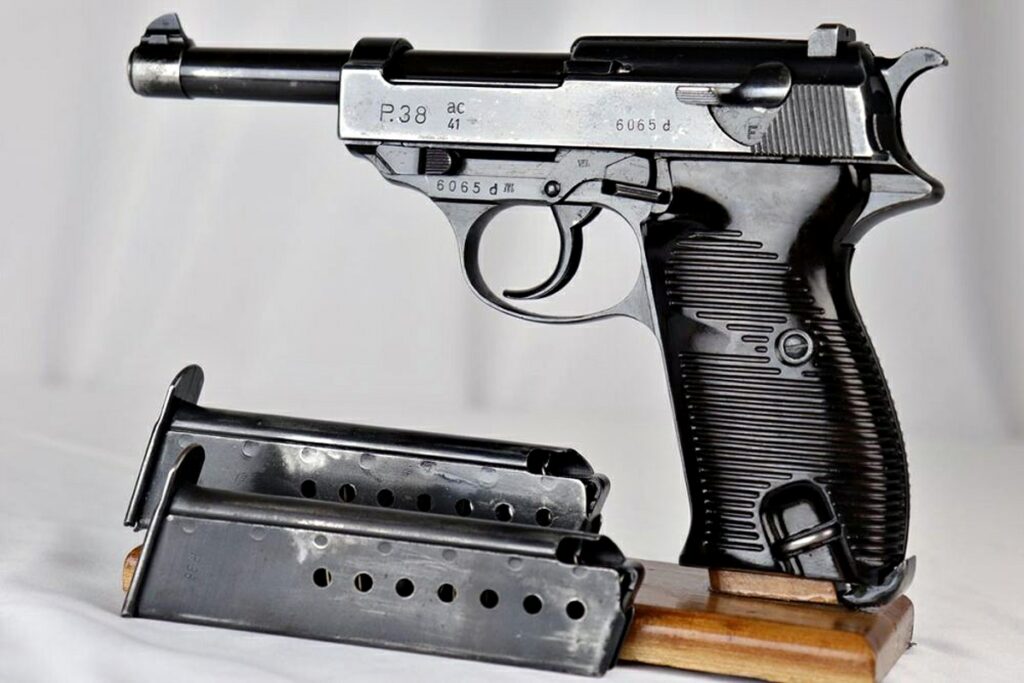
German manufacturing capacity never fully replaced the Luger before and during the Second World War, but the P38 was the primary German military sidearm until the 1945 surrender. Many officers also carried PPs or PPKs. Germany produced some 1.2 million P38s during the war, with Walther turning out 580,000. The rest were contracted to Mauser and Spreewerke. Many believe the P38 was the best service pistol of World War II.
The P38’s solid design and durability made it the natural choice for the new West German and Austrian Armies in the 1950s, as well as police forces across the two countries. The gun served with Austrian forces until they replaced it with the P80, better known as the Glock 17. Like the PP and PPK, the P38, with its post-war designation of P1, served the West German police forces into the 1980s.
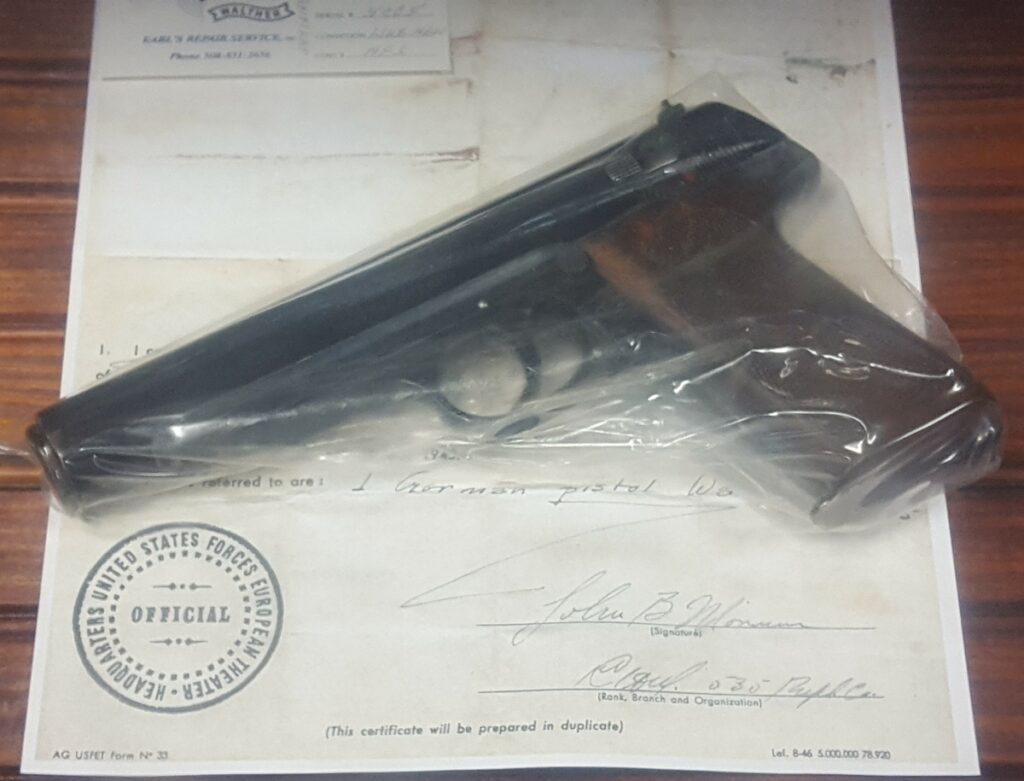
The P1 evolved throughout the Cold War era, culminating in the criminally underrated P5 in 1977. The P5 marked the height of the P38 legacy, but it never really caught on. Walther discontinued it in 1993.
The P38 was ahead of its time and, even though Walther was unable to fully exploit its later development, a more familiar firearm did: the Beretta 92. The 92’s open slide, double/single action system, decocker, and falling block locking system all came from the P38. So, this legendary design still lives, and thrives, today.
Walther Starts Over. Again.
World War II’s chaotic end left Walther’s Zella-Mehlis factory in the Soviet occupation zone. Two American soldiers arrived at Fritz Walther’s home in May 1945, telling him that his family had one hour to pack up and leave. It seems the Americans didn’t want knowledgeable weapon designers to fall under Soviet control. Fritz was only able to salvage a folder of design drawings and patents, leaving the rest behind.
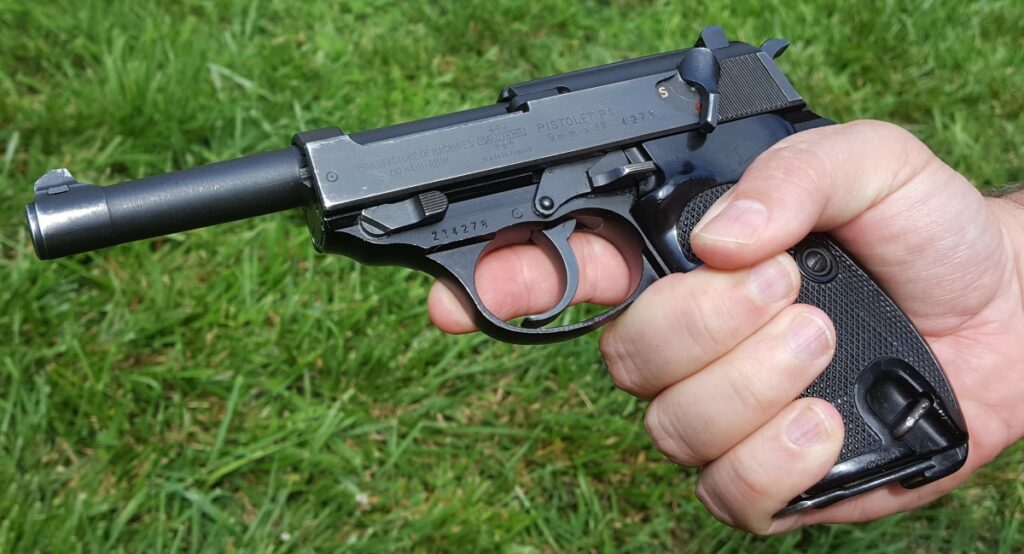
Fritz and his family relocated to Ulm, in the American zone, where the company is now based. Starting with a small shoe repair shop, Fritz began to rebuild. Once again, adding machines helped bridge the gap while the victorious Allies banned domestic firearms manufacturing in Germany.
Fritz also had the good sense to license his designs to French firearms manufacturer Manurhin, which was soon making the PP, PPK, and P1. Several European nations, including France, adopted those handguns. Walther resumed P1 production in the mid-1950s, but Manurhin made every PP until 1986. Walther rose from the ashes of war one more time.
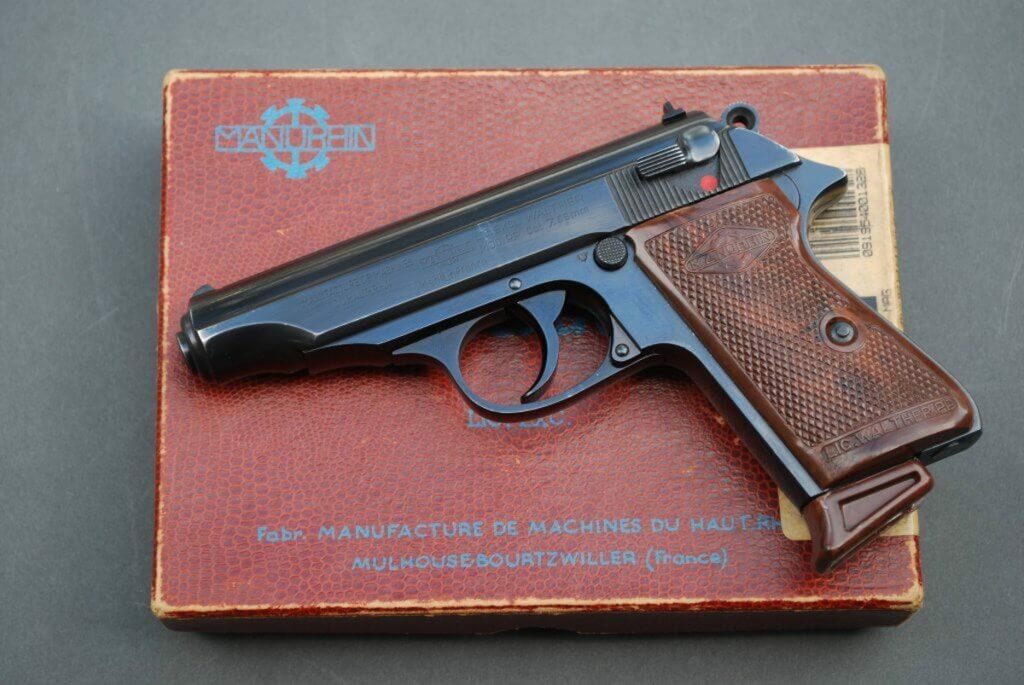
Modernization
The P5 and the excellent but prohibitively expensive P88 showed that Walther needed to modernize in the face of the new polymer-framed handguns pioneered by Glock. That modernization was led by Wulf-Heinz Pflaumer and Franz Wonisch, managing partners of Umarex, which acquired Walther in 1993.
The result was the superb Walther P99, the company’s first polymer-framed pistol, which nonetheless retained traditional Walther features like the double-single action capability with a decocker.
The P99 also represented a forward leap in ergonomics. Walther engineered the grip for the shooter’s hand. It was far superior to the slab-like grips of its primary competitors. It was also the first polymer gun to include interchangeable backstraps, further enhancing comfort and shootability.
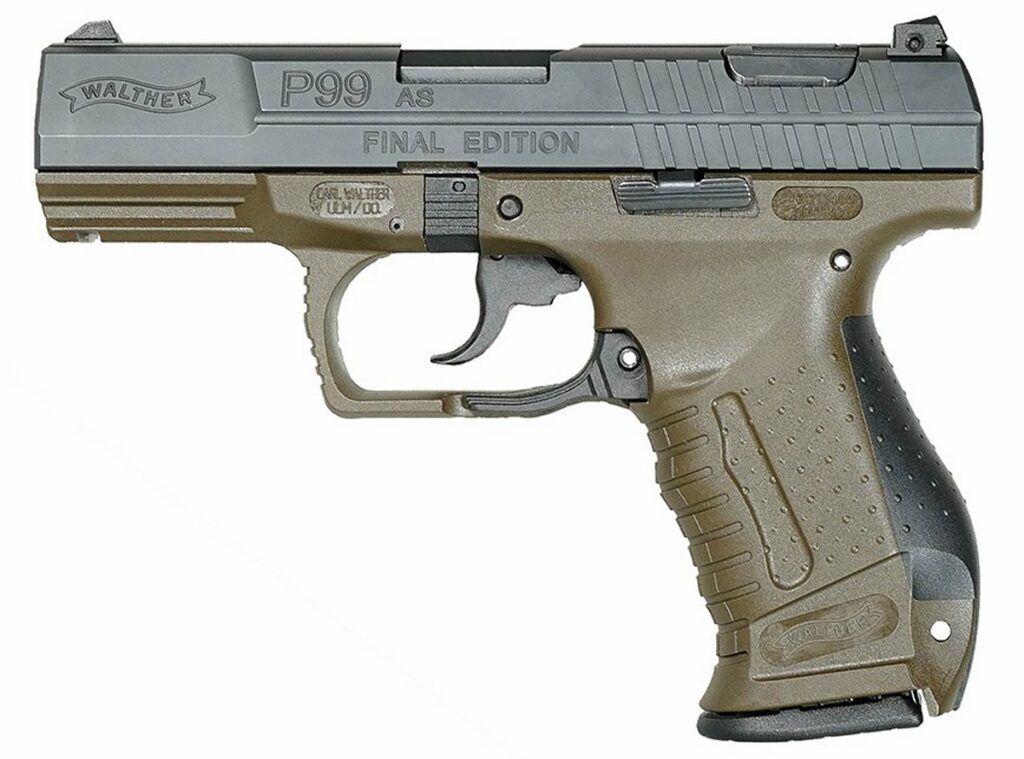
P99s came in a compact model, the P99C, and offered different trigger choices, including the two-stage Anti-Stress Trigger, and the single-action-only Quick Defense Trigger.
The Quick Defense Trigger concept was carried further into the P99’s next evolution, the PPQ (Police Pistol Quick Defense), which appeared in 2012. The PPQ featured upgraded ergonomics and is still considered by many to have the best out-of-the-box trigger ever produced. The PPQ is still available in .45 ACP and .22 Long Rifle.
Walther also added the excellent PPS (Police Pistol Slim) to the single-stack handgun trend. The M2 version probably offers the best ergonomic profile of any slim single-stack design.
Current Walther Lineup
Walther currently offers high-quality, cutting-edge firearms, while still honoring their classic heritage. The PDP (Police Duty Pistol) is the flagship pistol, superseding the PPQ in 2021. The PDP line offers a variety of barrel and slide lengths, compact and steel-framed models, and match-grade pistols, including the PDP-F series. Walther designed the PDP-F for the exact biometrics of women’s hands and reduces slide rack force by 20 percent.
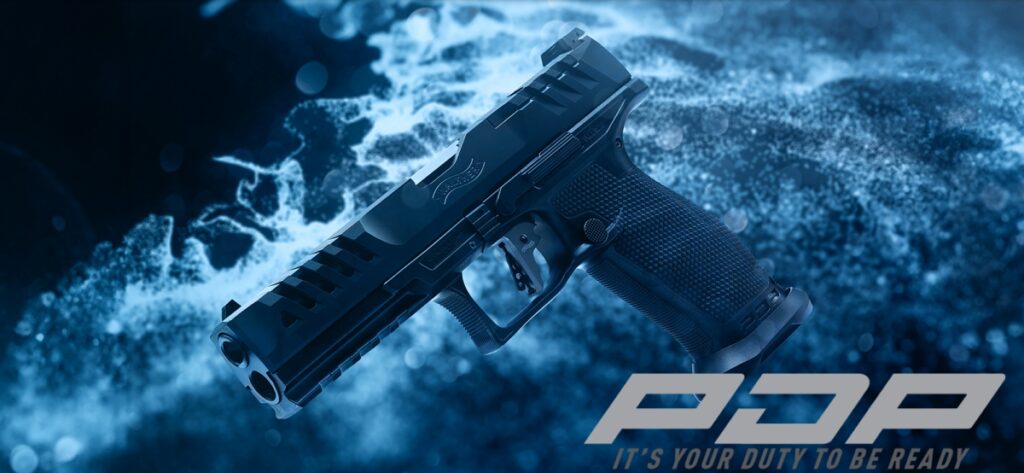
While Walther made their name with duty pistols, they haven’t neglected the concealed carrier, with quality handguns like the CCP (Concealed Carry Pistol), PPS M2, the new PD380, and the classic PPK and PPK/s.
The PPK/s came about when American import restrictions precipitated by the 1968 Gun Control Act blocked the PPK because the grip was too short. Walther overcame that setback by marrying the shorter PPK slide and barrel to the longer PP grip, calling it the PPK/s. There is some dispute, however, over what the “s” means. Some say it means “special,” while others say it means “sporting,” which may be true since the GCA favored “sporting” weapons over concealable self-defense guns.
Walther now manufactures many firearms, including the PPK, in their Fort Smith, Arkansas facility, so the original is once again available in the US.

Walther also features a well-received line of steel-framed competition guns, which can double as duty or carry pistols if desired. The Q4 and Q5 lines are proving that steel-framed guns are still viable in a polymer world.
Finally, Walther offers high-quality rimfire options for training or target shooting. The P22 is a proven, ergonomically friendly platform chambered in .22 Long Rifle. The PDP succeeded the PPQ, but Walther still offers a .22 version with all the PPQ’s great features. There is also a .22 LR PPK/s that comes with a threaded barrel, and, finally, the Walther Magnum Pistol (WMP) is a duty-sized .22 Magnum offering.
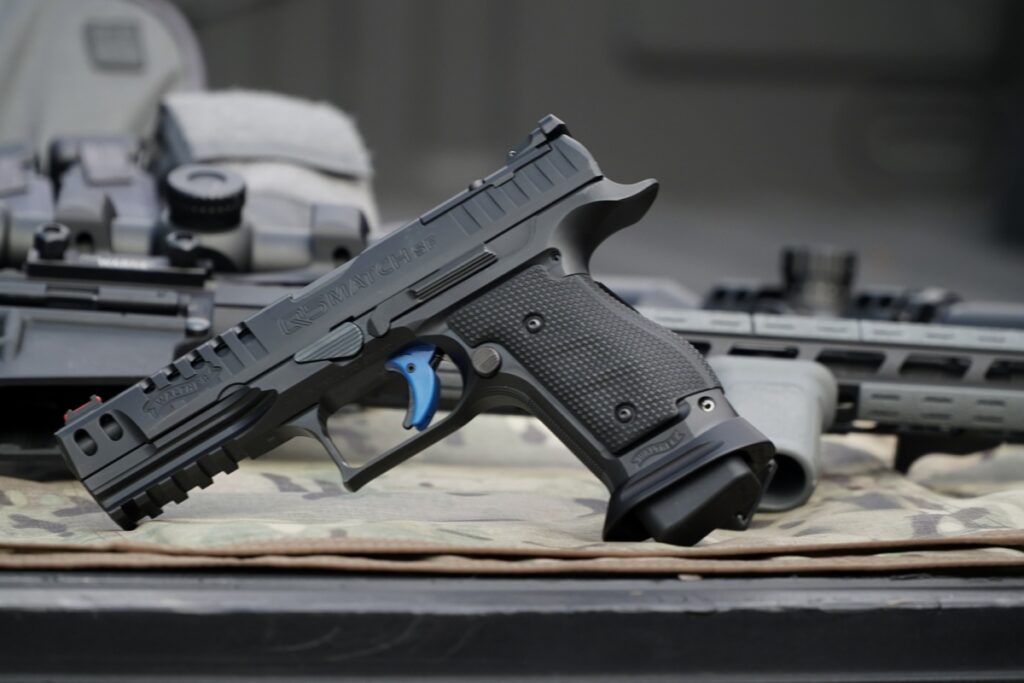
Walthers in Popular Culture
No Walther article would be complete without mentioning certain pop culture contributions. Novelist Ian Fleming did the company an enormous favor when he re-equipped his James Bond character with a Walther PPK in Dr. No. Bond had been carrying a wimpy little .25 ACP Beretta 418, when British weapons expert Geoffrey Boothroyd wrote to Fleming complaining that superspy 007 carried “a lady’s gun, and not a really nice lady at that.”
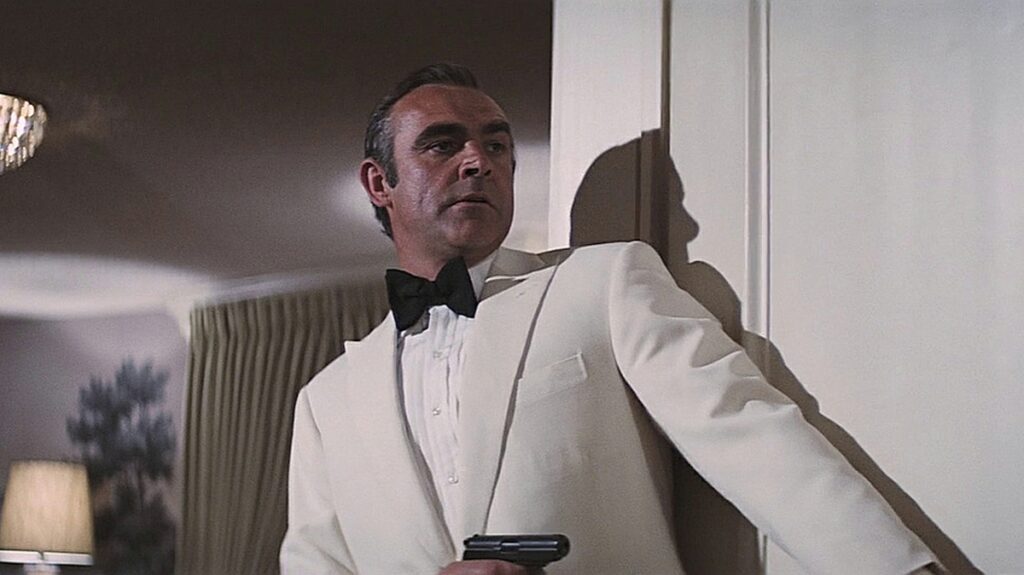
Boothroyd suggested the PPK chambered in 7.65mm Browning, which the character “Q’ describes as hitting “like a brick through a plate glass window.” The 7.65’s “stopping power,” is certainly debatable. But pairing Bond with the PPK created a match made in literary, cinema, and firearms Heaven. Fleming was so appreciative that he made Q’s real name “Major Boothroyd.” Who knows how many PPKs Walther has sold because of James Bond?
Later Bond films featured other Walther products. Pierce Brosnan and Daniel Craig, for instance, both used the P99. Even Roger Moore and Sean Connery rocked the P5 in the competing 1983 Bond movies, Octopussy and Never Say Never Again. But the PPK will always be 007’s classic sidearm.
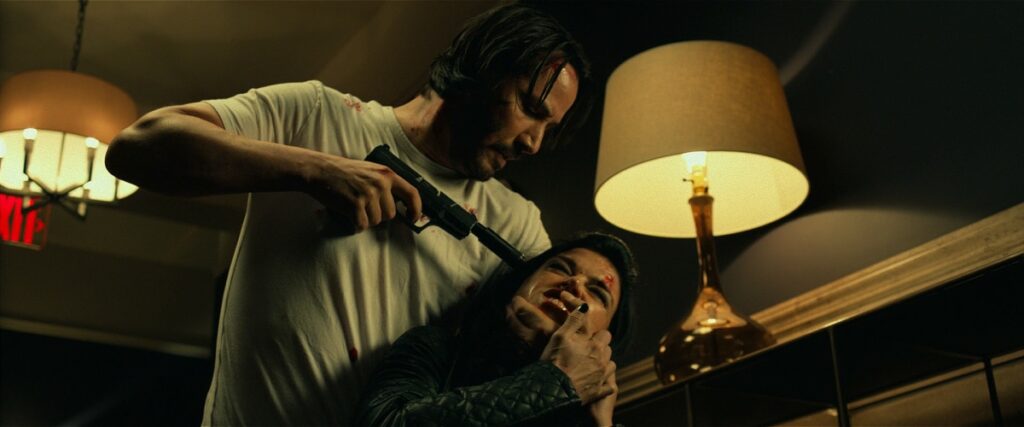
A more modern action hero has also been spotted with a few Walthers, like the P38, CCP, and PPQ. But John Wick’s only real Walther action came when he takes the assassin Ms. Perkins’ suppressed P99 away and threatens her with it. We’d like to see Mr. Wick roll out a PDP or Q4 Steel sometime.
Holsters and Accessories
Modern handguns are compatible with multiple accessories and the Walther line is no different. Holsters abound, including the Safariland options for the PDP guns. All the current Walthers, except the PPK, PPK/s, and PPS, have Picatinny rail sections. The entire PDP line, WMP, and Q4 and Q5 pistols are optic-ready out of the box.
A Storied Gunmaker
Walther is one of the world’s great gunmakers, even though they literally had to start over twice. The PP, PPK, and P38 are among the most successful handguns ever made, and the current Walther pistol lineup is second to none. And we haven’t even touched on the company’s long and successful history with precision competition rifles and pistols, or the awesome WA 2000 sniper rifle.
A German company through and through, Walther has nonetheless recognized the American market’s importance. After years of importing firearms through Smith & Wesson, the company’s Fort Smith facility makes Walthers more available than ever, with the PPK and PPK/s now manufactured there.
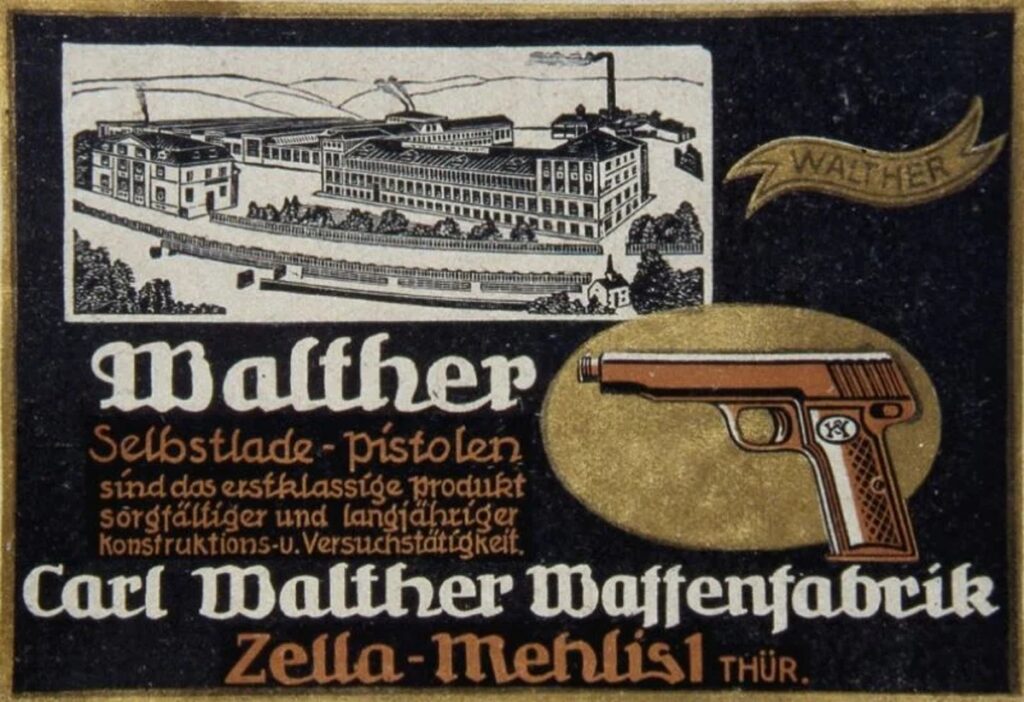
But the company honors its roots. Each firearm bears its founder’s name: Carl Walther. Some of Carl’s descendants are still minority shareholders. While it’s somewhat sad that the family no longer controls the company, the direction under Umarex has been undeniably positive.
Walther is once again a world leader, especially in the duty gun world. And how many gunmakers can boast that they’ve had a classic model in near-continuous production since 1931 and it’s just as popular as ever?
Walther has an illustrious past and a bright future. Carl Walther told his sons to “Do everything so well that no one can surpass you.” The company has always striven to follow that advice. Walther quality is second to none, while remaining affordable. The mix of classic and new designs offers something for almost everyone who shoots semi-auto pistols. Fritz Walther’s vision that his father’s company’s future lay with self-loading handguns proved far more correct than he could have ever known.





